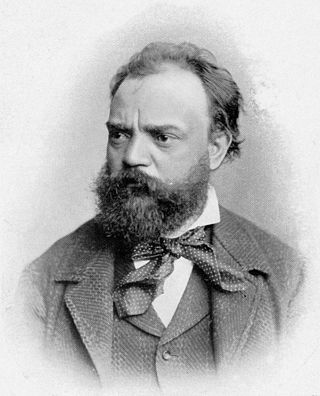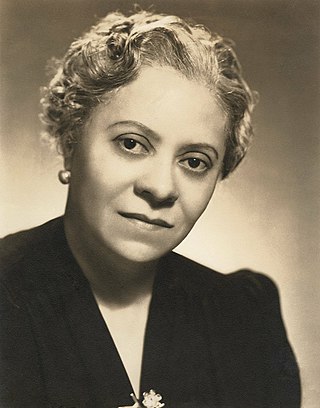Structure
The work features a standard, four-movement structure:
Mily Balakirev began work on his Symphony No. 2 in D minor in 1900, but did not complete the work until 1908. The premiere of the symphony was conducted by Russian composer Sergei Liapunov, a student of Balakirev, in St. Petersburg in 1909. Another performance was held in Paris soon afterwards.
The work features a standard, four-movement structure:

Op. 70 is a set of two Piano Trios by Ludwig van Beethoven, written for piano, violin, and cello. Both trios were composed during Beethoven's stay at Countess Marie von Erdödy's estate, and both are dedicated to her for her hospitality. They were published in 1809.

The Symphony No. 1 in E minor, Op. 39, by Jean Sibelius is a symphony started in 1898, and finished in early 1899, when Sibelius was 33. The work was first performed on 26 April 1899 by the Helsinki Orchestral Society, conducted by the composer, in an original version which has not survived. After the premiere, Sibelius made some revisions, resulting in the version performed today. The revised version was completed in the spring and summer of 1900, and was first performed in Berlin by the Helsinki Philharmonic, conducted by Robert Kajanus on 1 July 1900.

Alexander Aleksandrovich Alyabyev, also rendered as Alabiev or Alabieff, was a Russian composer known as one of the fathers of the Russian art song. He wrote seven operas, twenty musical comedies, a symphony, three string quartets, more than 200 songs, and many other pieces.
The Symphonie espagnole in D minor, Op. 21, is a work for violin and orchestra by Édouard Lalo.

Symphony No. 2 in D major, Op. 73, was composed by Johannes Brahms in the summer of 1877, during a visit to Pörtschach am Wörthersee, a town in the Austrian province of Carinthia. Its composition was brief in comparison with the 21 years it took Brahms to complete his First Symphony.

The Violin Concerto in A minor, Op. 53, is a concerto for violin and orchestra composed by Antonín Dvořák in 1879. It was premiered in Prague on October 14, 1883. by František Ondříček, who also gave the Vienna and London premieres. Today it remains an important work in the violin repertoire.
Piano Sonata No. 15 in D major, Op. 28, is a piano sonata by Ludwig van Beethoven. The name Pastoral or Pastorale became known through A. Cranz publishing of Beethoven's work, but was first coined by a London publisher, Broderip & Wilkinson. While not as famous as its immediate predecessor, Piano Sonata No. 14, it is generally admired for its intricate technicality as well as for its beauty. The sonata takes roughly twenty-five minutes to play with its intended repeats.
The Fantasie in C major, Op. 15, popularly known as the Wanderer Fantasy, is a four-movement fantasy for solo piano composed by Franz Schubert in 1822. It is widely considered Schubert's most technically demanding composition for the piano. Schubert himself said "the devil may play it," in reference to his own inability to do so properly.
Sergei Prokofiev's Quintet in G minor, Op. 39 is a piece of chamber music for oboe, clarinet, violin, viola and double bass, written in 1924. The quintet, closely related to Prokofiev's ballet, Trapèze, contains six movements and lasts 20–25 minutes.
Symphony No. 76 in E♭ major is a symphony by Joseph Haydn completed in 1782.

The Symphony No. 5 in F major, Op. 76, B. 54, is a classical composition by Czech composer Antonín Dvořák. It was originally published as Symphony No. 3.
Samuel Barber's Symphony in One Movement (Op. 9), was completed 24 February 1936. It was premiered by Rome's Philharmonic Augusteo Orchestra under the baton of Bernardino Molinari on 13 December 1936. It lasts around 21 minutes. The title given in the printed score of the work is First Symphony (in One Movement), and the uniform title is Symphonies, no. 1, op. 9.
The Symphony No. 1 by Arnold Bax was completed in 1922 and dedicated to John Ireland. Its outer movements were based on a Piano Sonata in E♭ that Bax subsequently orchestrated, while the central movement was newly composed for the symphony.

Nikolai Rimsky-Korsakov composed his Symphony No. 1 in E minor, Op. 1, between 1861 and 1865 under the guidance of Mily Balakirev. Balakirev also premiered the work at a concert of the Free Music School in December 1865. Rimsky-Korsakov revised the work in 1884.

Joseph Haydn's Symphony No. 17 in F major, Hoboken I/17, may have been written between 1757 and 1763.
The Symphony No. 1 in C minor, Op. 3, by Nikolai Myaskovsky was written in 1908.

The Symphony No. 3 in C minor is a symphony for orchestra composed by Florence Price in 1938. The work was commissioned by the Works Progress Administration's Federal Music Project during the height of the Great Depression. It was first performed at the Detroit Institute of Arts on November 6, 1940, by the Detroit Civic Orchestra under the conductor Valter Poole. The composition is Price's third symphony, following her Symphony in E minor—the first symphony by a black woman to be performed by a major American orchestra—and her lost Symphony No. 2.
Symphony No. 0 by Russian composer Alfred Schnittke was composed in 1956–57 whilst Schnittke was a student at the Moscow Conservatory. It was given its first performance in 1957 by the Moscow Conservatory Symphony Orchestra conducted by Algis Zhiuratis. Present at the premiere were Dmitri Shostakovich and Dmitry Kabalevsky.

The Symphony No. 1 in G minor by Russian composer Vasily Kalinnikov was written from 1894 to 1895 and first published in 1900. The symphony is dedicated to Russian music critic and teacher Semyon Kruglikov.

The Symphony No. 2 in A major by Russian composer Vasily Kalinnikov was composed from 1895–1897 and first published in 1901. The symphony is dedicated to Alexander Winogradsky.